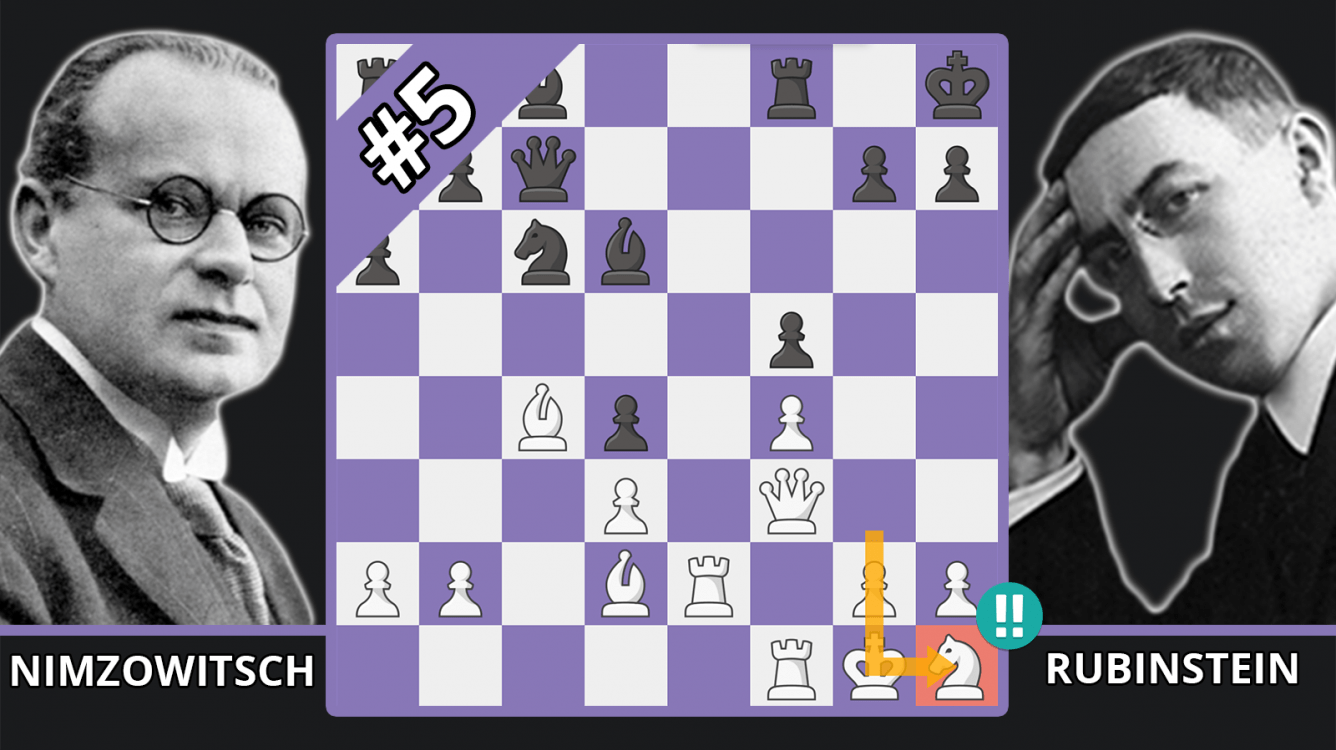
Nimzowitsch Explains The Game HE Considers His Best - Nimzowitsch vs. Rubinstein, 1926
Many chess players become known for their famous games. Aron Nimzowitsch is highly associated with his Immortal Zugzwang victory over Saemisch. The game is a beautiful miniature culminating with the announcement of zugzwang with 25...h6!!
As famous as this game is, Nimzowitsch himself considered his victory over Akiba Rubinstein even finer. Nimzowitsch demonstrated both his great positional skills and his attacking skills in this multi-phase context. All of this is buttressed by his fantastic propoganda skills, and his comments in the annotations are well worth reading in full!
Top 10 Games of the 1920s
- #1: ????
- #2: ????
- #3: ????
- #4: ????
- #5: Nimzowitsch vs. Rubinstein, 1926
- #6: Imbaud vs. Strumilo, 1922
- #7: Reti vs. Lasker, 1924
- #8: Denker vs. Feit, 1929
- #9: Reti vs. Euwe, 1920
- #10: Torre vs. Banks, 1924
- See also: Top 10 of the 1930s, Top 10 of the 1940s, Top 10 of the 1950s, Top 10 of the 1960s, Top 10 of the 1970s, Top 10 of the 1980s, Top 10 of the 1990s, Top 10 of the 2000s, and Top 10 of the 2010s
From the opening move, Nimzowitsch plays creatively. Opening with the English and advancing his e-pawn with a dynamic weakening of d3 that is currently mainstream theory.
After the opening, Nimzowitsch establishes a kingside initiative by advancing his f-pawn, and then he converts his pawn aggression into a valuable open e-file. A star regrouping is 18.Nh1!! which swings the knight on a long, but successful journey to g5. While cleaner finishes were available, 36.b5!! was a particular find denouement.
Nimzowitsch's annotations from his prolific and profound writings are below, along with some small additions. Enjoy the game!
If you like the content and want to support it, subscribe and follow on YouTube and Twitch!

